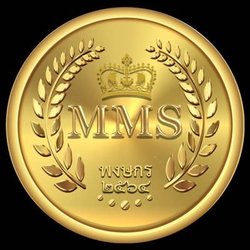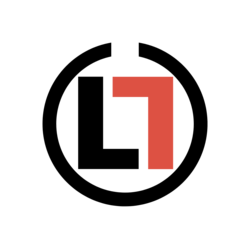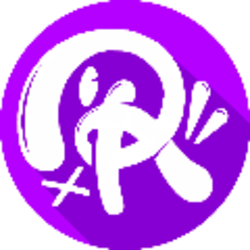Writing to you from Mt Shasta, in (sometimes) Sunny California, and maybe being a new face to some in the Dash community, I thought it might be a nice way to get acquainted by making a climb up the mountain with you. We’ll talk about my own journey coming to work for Dash, see if we can spot some new Dash Sentinels, and look at the course the Dash network appears to be on from a decent height. Mt Shasta is 14,180ft (4322m). I think we’ll see a lot from there, and on the way.
I’ve been tuning in more and more to the Dash community of late, which has been an exciting journey for myself, and our team at Mazaclub. We’ve been developing Electrum software and services along with working with Maza, and have been working more and more with the Dash development teams.
We currently run a small service for the network, maintaining Electrum servers, and we’ve been leading development of Electrum-Dash for some time. We’ll bring some technical news to you soon, we have plenty of fun open source tools and toys to talk about, but today I’ll bring you up to the top of the mountain, and we’ll get that 14,000ft view that we need to see where Dash may be going!
As we start our journey at the bottom of the mountain we find my own small team, struggling to make releases and keep systems running. The extended bear market in BTC and and other coins drained resources. Meanwhile, we’ve become known for working with Electrum software and several dev teams,and Evan & his team approached us to bring Electrum to Dash. Evan was also releasing the Evolution materials, and I could see that he had a mission, and a plan for Dash. We’ve seen this before, from the sidelines, as Darkcoin was rebranded to Dash, and now we could see much more the reasoning why.
As exciting as Evolution is, it’s a lot of work to evolve, and it takes time. To climb the mountain takes many steps, and we need to rest a few times along the way. Here might be a good place to rest & look a bit at what do we mean by DAO – Decentralized Autonomous Organization.
I’ve spent most of my career building systems, and early on we realized that not only as Sun Computers said “The Network is the Computer”, but truly, in a technical business the “Network is the Business Plan”. This is as true today as it was 20 years ago when we built dialup internet providers. What the company can do is defined by the network and the software running on it.
Bitcoin may have been the first truly decentralized network-driven organization. Millions of people working independently, in their own smaller teams towards some sort of a common goal primarily to promote usage of Bitcoin as a currency. Bitcoin as a network produces a commodity that we can use as currency. This becomes the product of the Bitcoin DAO. We’ve seen that Bitcoin provides a strong protocol, but doesn’t provide much organization to the organization that it effectively creates. This lack of organization is at the same time what makes Bitcoin great, and what makes Bitcoin so difficult.
We’ve also seen organizations that use or produce blockchains, much like Bitcoin, totally decentralized, and some by corporate entities, and consortiums, with varying amounts of centralization, but generally lacking in an important feature of a DAO that we do see in Bitcoin: Autonomy.
In a DAO, like Dash or Bitcoin, the Network not only is a business plan, but a business. The decentralized consensus systems we build form a decentralized business. Any business needs a product, and most DAOs today provide their internally generated currency as that product. Dash is no different in this regard.
So let’s climb up a little higher, and have a look at how the DAO model evolves, specifically in Dash. Hopefully that cloud will clear as we make the summit!
Here at mazaclub, I said we’d been struggling, and after we’d produced our first release of Electrum-Dash, we were definitely hard pressed to produce another, keep supporting systems running, and keep our other products growing as well. As developers at Maza we considered the future of that coin and the paths we saw in Bitcoin, Dash, and other coins & DAOs. Dash was clearly solving issues with Masternodes voting on spending of the network’s internally generated capital.
After some time of feeling like Sisophus, pushing the boulder up the hill, you need a break. The Dash team wanted us to produce more features for, and release of Electrum-Dash, They could feel that we were a bit reluctant to take on the work, but wanted to work with them. As we talked on the phone, it seemed clear turned more toward setting our team back into a position of growth, and back into a position to deliver quality product to the Dash network users.
Evan helped us through our first project through the Budgeting system. As I looked through the various projects, funded, and unfunded I saw a few things we can see from this height. The Masternodes provide a valuable service, in their processing of transactions, but they
also provide more. They provide another level of personal ownership in the DAO, the right to vote in Budget proposals, that goes beyond simply holding Dash. We’ve seen some attempts at “governance” with crypto-token based voting, but with Dash owners voting on the way the Dash network allocates its internal capital, Dash definitely puts real Stake behind the votes.
Now, as someone who’s been around bitcoin and altcoins for a good while now, I’m still pretty excited by simple things. One of the most amazing features of Bitcoin especially as a newcomer, and a miner, is just that: Bitcoins! I didn’t get to mine any early bitcoin, but I’ve mined my share of Litecoin and others along the way. Finding those “new” coins is a special thing when it’s new, and, well, Dash is still pretty new! What’s really new with Dash is that here I was, developing opensource tools, and network systems, “for the Dash Network”, not for some company that contributes time to the development of Dash, as we see in Bitcoin, but directly for the network.
But I also can see that this model will be difficult to scale as is. I see a lot of proposals, some well defined, some vague. Well known names seemed to have higher voter participation and, of course yes votes. It seemed clear that, much as we see in the other common governance structures around us, the masternode operators didn’t have time, or sufficient background, to properly evaluate some proposals.
In short, it looks to me like the current budgeting system succeeds very well at one thing: putting the network in control of its own destiny. In some ways, the Masternode network does centralize Dash, but it does so in the code, rather than in the market, as we see in networks that only use Nakamoto Consensus like Bitcoin, or Maza. While there is some centralization inherent in the Masternode model, the expense of acquiring a controlling vote is pretty significant. Indeed, no different than climbing the steepest mountain. Aggressive buying escalates price quickly, making control much more difficult to attain. In many ways we could compare that potential to that of hostile takeovers of public corporations, but not all..not being a corporate entity Dash is fundamentally different, and how it absorbs or reacts to hostile actors is different.
Seeing that the Dash network creates an organization, as most any open consensus based blockchain network, it’s hard not to see Dash as a startup, much like any tech startup we see in Silicon Valley, Berlin, Buenos Aries, but without all typical startup trappings, and traps. Some of those traps still exist for Dash, and other cryptocurrency projects. The biggest issue we see in Bitcoin, that Dash attempts to solve, is the governance of development of the network core code and protocols. Some large percentage of new businesses fail because they fail to address the needs of the company to have organization, basic company governance. The company continues to grow its products or services line, grow sales, and neglects establishing the lines of delegation that are needed to make efficient business decisions.
At first the few members of the founding team can handle the business, and the work to create the product or service it offers. But, rarely do flat organizational models scale, so we rely on various types of hierarchies. At some point the startup that wants to grow beyond the founders needs to “act like a real company”. One of the first things the founders, and early hires need to tend to is the work of more people coming on board the organization.
If Dash is a company, why not act like one?
What does that mean though, to “act like a real company”? How can that apply to a decentralized organization? What does it mean to establish a decision-making hierarchy in a DAO?
I can almost hear the cries of the faithful Fundamentalist Satoshists worldwide, much as we heard those cries as Dash implemented what was, so long ago, controversial masternodes. While the Satoshists may view the masternode as a sacrilege and a form of “centralization”, from my 10,000ft view here at the treeline I can see quite a way and it’s pretty clear.
The rate of new Dash clones coming out seems to be exceeding the rate of pure Bitcoin clones. What does that tell us?
But, the fate of Bitcoin isn’t determined any more than Dash’s fate. Some of the world’s most talented developers work on Bitcoin. Some of the world’s most talented developers work for Dash.
Dash, and its many followers are on another course. Instead of relying on just the machine-based Nakamoto Consensus, there’s real human to human interaction. Having this capability of interaction, if only through proposals and voting, builds the community in less a chaotic fashion that we’ve seen in so many cryptocurrency projects. In some more direct sense than “written in the network core protocol code” Dash gives us a means to have some kind of human understandable social contract with other stakeholders, which may be important, for one key reason: most humans can’t read code.
“But it doesn’t scale”:
It’s the cry of the day all over, but it’s as true in Dash as it is in bitcoin. In Bitcoin, the concern is the network won’t scale (of course it could!) In Dash, my own concern is that the governance system won’t scale, the organization itself won’t scale to meet the demand for its products and services in the future if it fails to develop the structures needed now.
Evan recently announced that the core team is working on Sentinel, a step towards the Evolution vision, and a step towards features there: DSQL, DashDrive and more. With Sentinel comes the beginning of a new budgeting process, another business management layer with project managers. With Sentinel comes more delegation of authority, and a notion of identity and reputation.
Sentinel makes Dash look more like a business, and less like a “blockchain” to me. The masternodes still vote to run the network, the business, but there’s more delegation of authority so that they can focus on the higher elevation view, and let managers deal with the daily details.
We camp here, and then make the summit after a rest. We’ll take in that 14000ft view from the top of this mountain, and envision how Sentinel, and a new budgeting process, will affect Dash, as a company, as a network, as a decentralized organization. We’ll look at what we can see far across the valley to the next mountain, Evolution. We’ll ask the important questions – How will Dash Evolve, and what are our roles in that evolutionary process? Is Dash a business, a company, and if so, what does that even mean? What does that mean to the owners of Dash, owners of masternodes, and the people working for Dash today?
After our view on the top, we have to come back down to where we can do the real work. We’ll talk with Evan, and get a firmer grasp on his own vision, and how he sees Dash Evolving as a business enterprise. As we see the introduction of Projects, Project Managers, and Project Employees, we’ll ask how that applies to a few of the real Budget Proposals that will be replaced with this new model. As Dash becomes more of a company, we’ll ask how that “centralizes the network” and how it furthers the goal of decentralization.
Most importantly, we’ll find out exactly how it is we get to work for Dash so Dash can work for us!
Hope you liked the first part where ROB talks about his personal experience with Dash and a little on the new Budget System. Join him in the next chapter to discover more about the future of the DGBB. If you liked this article follow us on Twitter @dashpaymagazine and make sure to subscribe to our newsletter to receive the latest Dash news.



















